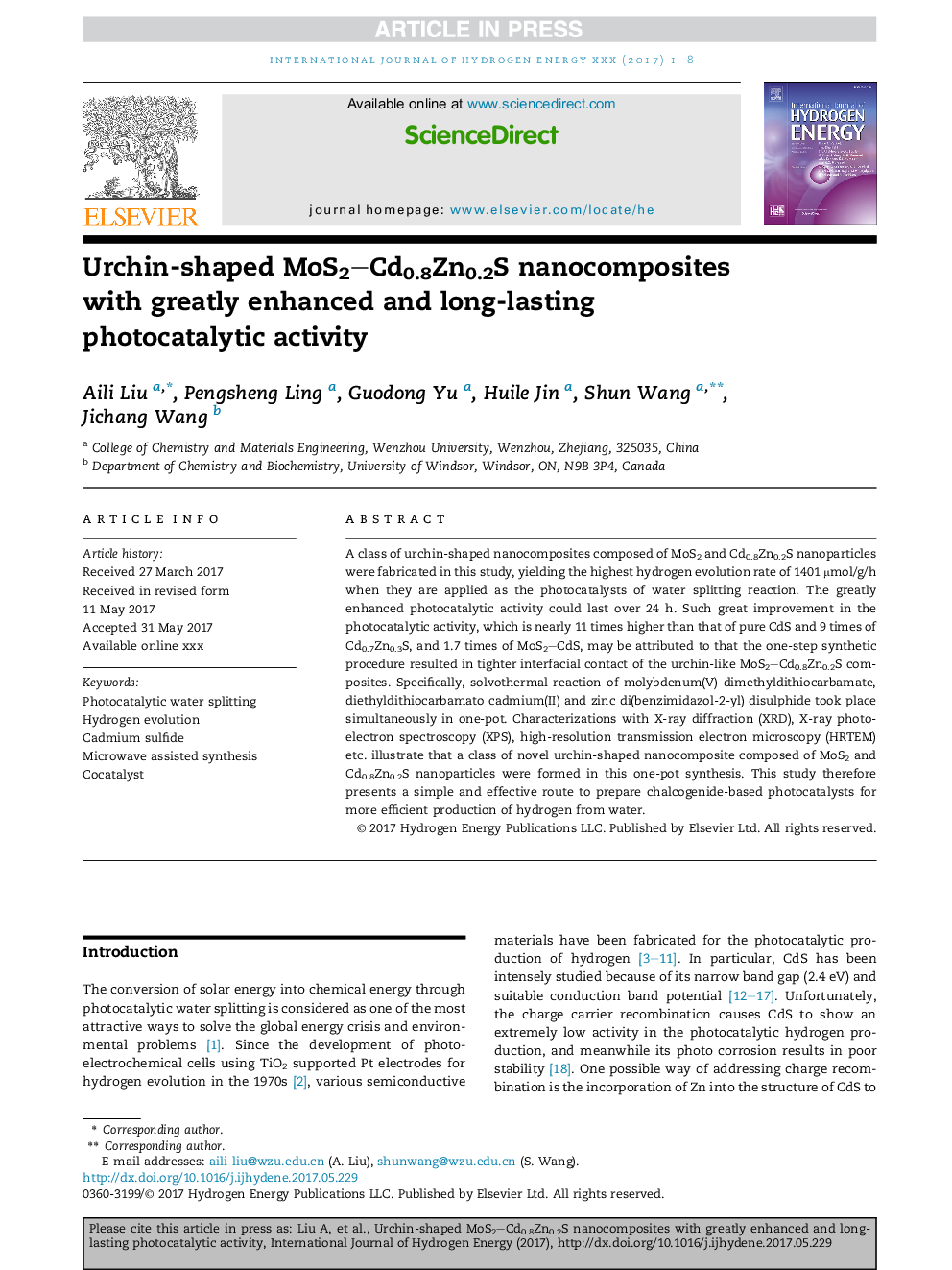| Article ID | Journal | Published Year | Pages | File Type |
|---|---|---|---|---|
| 5147012 | International Journal of Hydrogen Energy | 2017 | 8 Pages |
Abstract
A class of urchin-shaped nanocomposites composed of MoS2 and Cd0.8Zn0.2S nanoparticles were fabricated in this study, yielding the highest hydrogen evolution rate of 1401 μmol/g/h when they are applied as the photocatalysts of water splitting reaction. The greatly enhanced photocatalytic activity could last over 24 h. Such great improvement in the photocatalytic activity, which is nearly 11 times higher than that of pure CdS and 9 times of Cd0.7Zn0.3S, and 1.7 times of MoS2-CdS, may be attributed to that the one-step synthetic procedure resulted in tighter interfacial contact of the urchin-like MoS2-Cd0.8Zn0.2S composites. Specifically, solvothermal reaction of molybdenum(V) dimethyldithiocarbamate, diethyldithiocarbamato cadmium(II) and zinc di(benzimidazol-2-yl) disulphide took place simultaneously in one-pot. Characterizations with X-ray diffraction (XRD), X-ray photoelectron spectroscopy (XPS), high-resolution transmission electron microscopy (HRTEM) etc. illustrate that a class of novel urchin-shaped nanocomposite composed of MoS2 and Cd0.8Zn0.2S nanoparticles were formed in this one-pot synthesis. This study therefore presents a simple and effective route to prepare chalcogenide-based photocatalysts for more efficient production of hydrogen from water.
Keywords
Related Topics
Physical Sciences and Engineering
Chemistry
Electrochemistry
Authors
Aili Liu, Pengsheng Ling, Guodong Yu, Huile Jin, Shun Wang, Jichang Wang,
